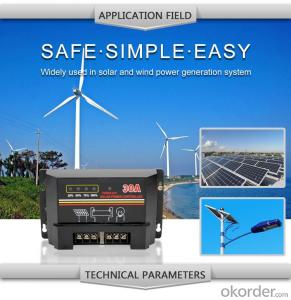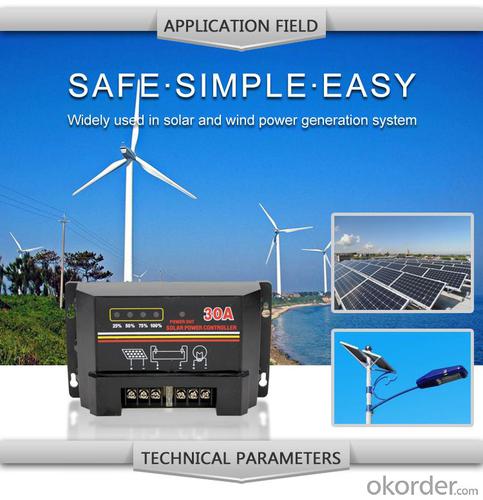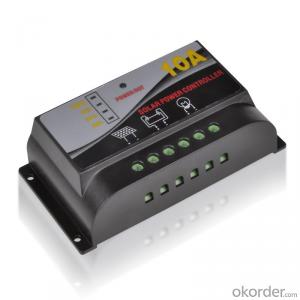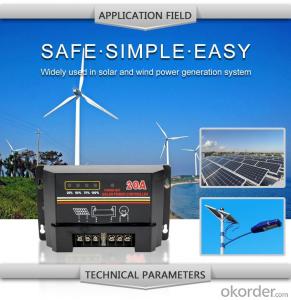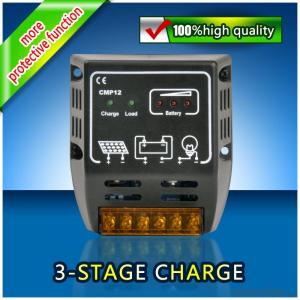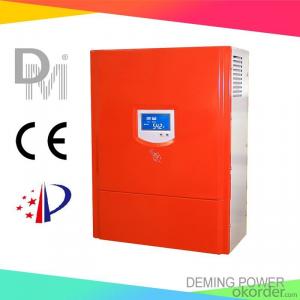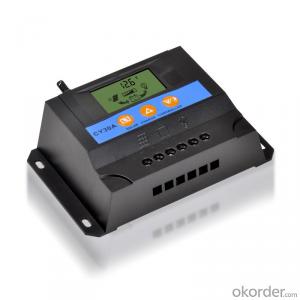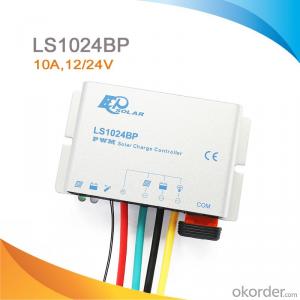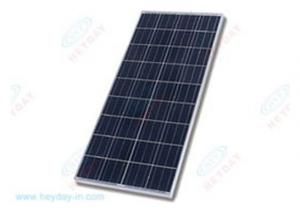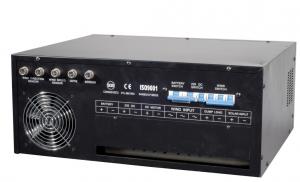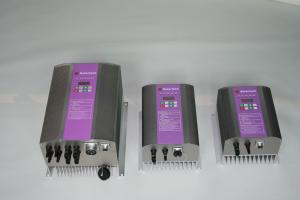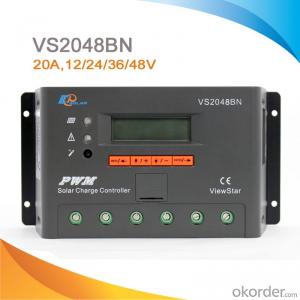100 Watt Solar Panel Controllers - Solar LCD Controller DM130A with Best Price Hot Selling Model
- Loading Port:
- China main port
- Payment Terms:
- TT or LC
- Min Order Qty:
- 1 unit
- Supply Capability:
- 10000 unit/month
OKorder Service Pledge
OKorder Financial Service
You Might Also Like
Product IntroductionSolar controller is control device which can control solar panel and transform solar energy into electricity then store to the battery bank. Solar controller is the most important part in offgrid system, whose performance has much effect on life expectancy and operation of the whole system, especially the battery expectancy.
Application Areas
Standalone Photovoltaic power station
Standalone Domestic household photovoltaic power system
Mobil communication base stations, expressway and other non-residential regions.
Coastal islands, remote mountainous, border posts for regions shortage of or without electricity.
Government demonstration projects, landscape lighting project etc.
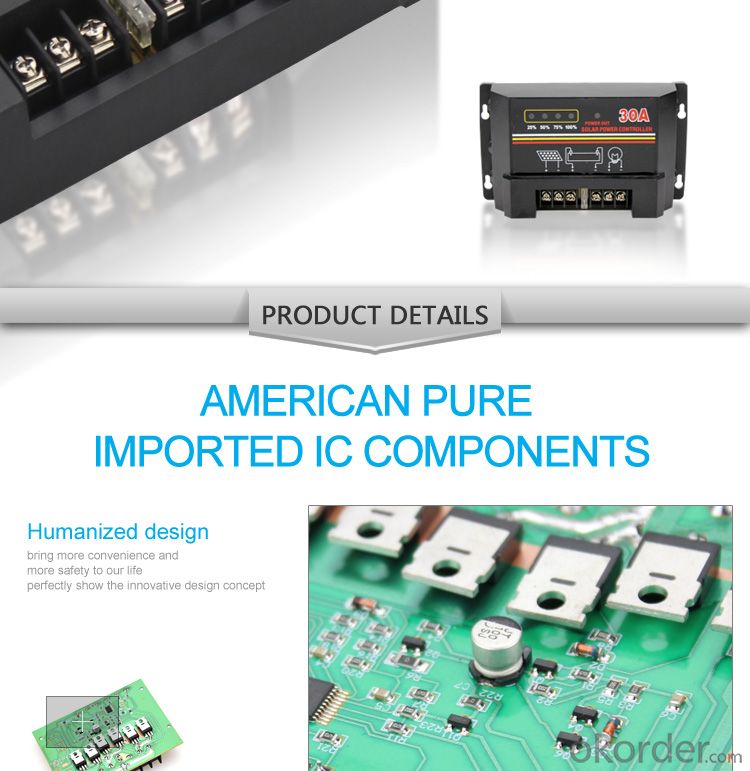

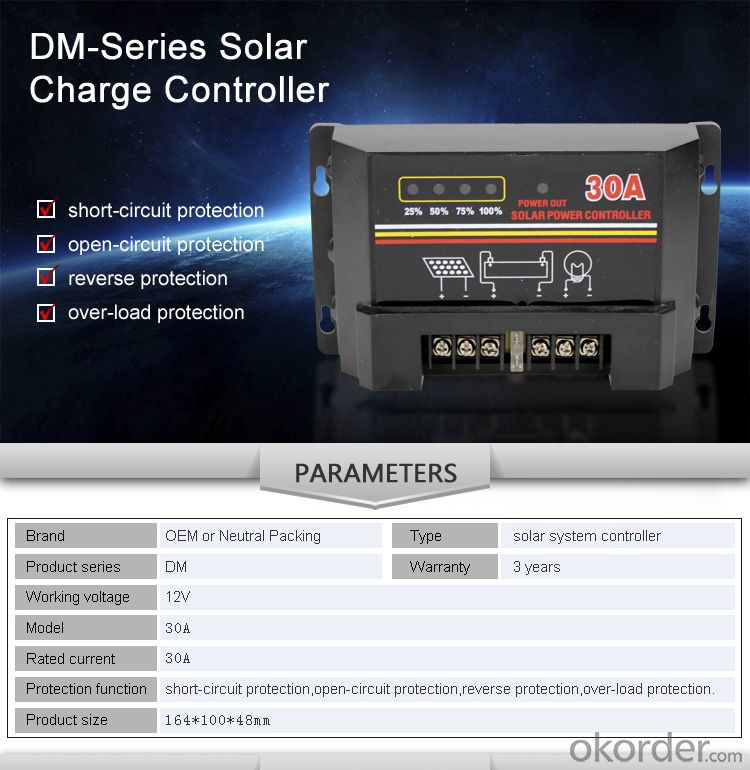
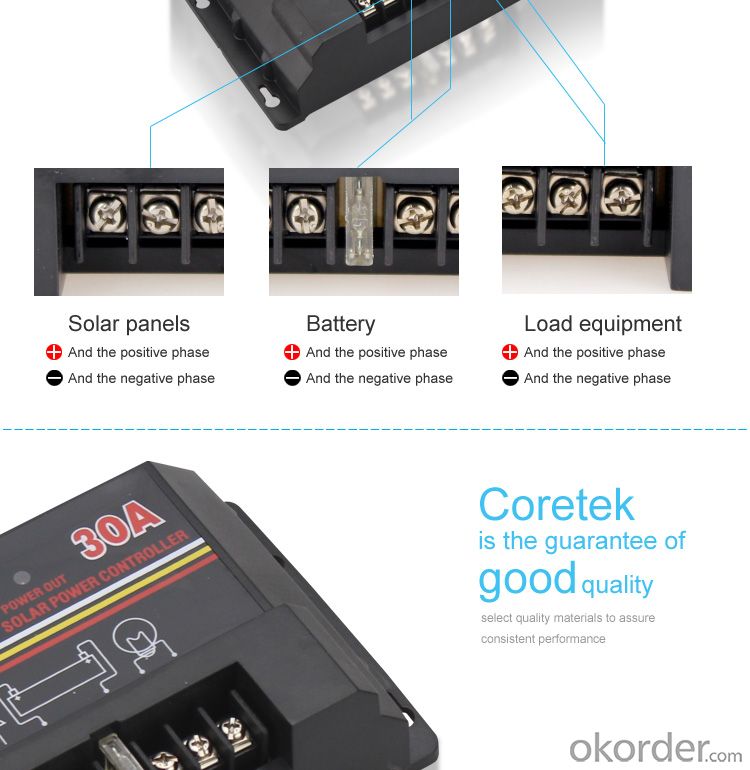
- Q: Can a solar controller be used with a solar-powered charging station for electric bikes?
- Yes, a solar controller can be used with a solar-powered charging station for electric bikes. A solar controller helps regulate the voltage and current from the solar panels to ensure optimal charging for the electric bikes' batteries. It also protects the batteries from overcharging and damage.
- Q: Can a solar controller be used with a solar-powered parking meter?
- Yes, a solar controller can be used with a solar-powered parking meter. A solar controller regulates the flow of electricity from the solar panels to the battery, ensuring efficient charging and preventing overcharging. It is an essential component in any solar power system, including solar-powered parking meters, to optimize energy utilization and prolong battery life.
- Q: Can a solar controller be used with a portable solar generator?
- Yes, a solar controller can be used with a portable solar generator. A solar controller helps regulate the flow of electricity from the solar panels to the generator's battery, preventing overcharging and optimizing charging efficiency. This is important for maintaining the lifespan of the battery and ensuring the generator operates at its maximum potential.
- Q: Can a solar controller be used with a wind turbine system?
- Yes, a solar controller can be used with a wind turbine system. A solar controller is designed to regulate the charging and discharging of batteries in a solar power system. Similarly, a wind turbine system also generates electricity that needs to be regulated and stored in batteries. Therefore, a solar controller can effectively manage the charging and discharging process in a wind turbine system as well.
- Q: Can a solar controller be used with AGM batteries?
- Yes, a solar controller can be used with AGM (Absorbent Glass Mat) batteries. AGM batteries are sealed and maintenance-free, making them compatible with solar controllers. The solar controller helps regulate the charging and discharging of the batteries, ensuring optimal performance and extending their lifespan.
- Q: How does a solar controller handle variations in load power requirements?
- A solar controller handles variations in load power requirements by constantly monitoring the power output from the solar panels and adjusting the charging current accordingly. When the load power requirement increases, the solar controller increases the charging current to meet the demand. Similarly, if the load power requirement decreases, the solar controller reduces the charging current to prevent overcharging. This dynamic adjustment ensures that the load power requirements are met efficiently while maintaining the optimal charging conditions for the batteries.
- Q: Can a solar controller be used with a solar-powered charging station for electronic devices?
- Yes, a solar controller can be used with a solar-powered charging station for electronic devices. A solar controller helps regulate the voltage and current from the solar panels to ensure efficient charging and protect the connected devices. It prevents overcharging and optimizes the charging process, making it compatible and safe for use with a solar-powered charging station.
- Q: Can a solar controller be used with solar-powered indoor ventilation systems?
- Solar-powered indoor ventilation systems can indeed utilize a solar controller. The role of a solar controller is to regulate the transfer of electricity from solar panels to the ventilation system. Its purpose is to enhance the system's efficiency and effectiveness, thereby maximizing the utilization of solar energy. Regardless of whether the ventilation system is installed indoors or outdoors, both the solar panels and the ventilation system can be linked to the solar controller. This connection allows for power supply management and optimal system performance.
- Q: Can a solar controller be used with a solar-powered public transportation facility?
- Yes, a solar controller can be used with a solar-powered public transportation facility. A solar controller is a crucial component in regulating and optimizing the charging and discharging of batteries in a solar power system. It ensures that the solar panels are efficiently converting sunlight into electricity and that the batteries are being charged and discharged at the appropriate levels. In a solar-powered public transportation facility, a solar controller would help manage the energy flow from the solar panels to power the electric buses or trains, ensuring reliable and sustainable operation.
- Q: How do I integrate a solar controller with an existing solar panel system?
- In order to integrate a solar controller with an existing solar panel system, there are several steps that need to be followed: 1. Determine compatibility: Begin by confirming that the solar controller you have is compatible with your current solar panel system. Examine the specifications and requirements of both the solar controller and the solar panels to ensure they are able to work together effectively. 2. Disconnect existing connections: Before connecting the solar controller, it is necessary to disconnect any existing connections from the solar panels. This entails shutting down the solar panel system and detaching any wires or cables that are connected to the panels. 3. Install the solar controller: Once the existing connections have been disconnected, proceed with the installation of the solar controller. The installation process may differ depending on the specific model, so it is advisable to refer to the manufacturer's instructions for guidance. Typically, you will need to mount the solar controller in a suitable location near the solar panels and connect the appropriate wires. 4. Connect the solar panels to the controller: After installing the solar controller, reconnect the solar panels to it. This generally involves connecting the positive and negative wires from the solar panels to the corresponding terminals on the solar controller. It is important to ensure that the connections are secure and properly tightened. 5. Reestablish the system: Once the solar panels are connected to the solar controller, you can now reconnect the rest of the system. This includes reconnecting the wires or cables that were previously disconnected. 6. Test and monitor: After completing the integration, turn on the solar panel system and closely monitor its performance. Verify that the solar controller is functioning correctly and effectively regulating the charge from the solar panels. If necessary, make any adjustments or settings according to the manufacturer's instructions. It is essential to note that if you have any uncertainties or feel uncomfortable with any of the steps involved, it is highly recommended to seek professional assistance from a qualified electrician or solar technician. They will be able to ensure a safe and proper integration of the solar controller with your existing solar panel system.
Send your message to us
100 Watt Solar Panel Controllers - Solar LCD Controller DM130A with Best Price Hot Selling Model
- Loading Port:
- China main port
- Payment Terms:
- TT or LC
- Min Order Qty:
- 1 unit
- Supply Capability:
- 10000 unit/month
OKorder Service Pledge
OKorder Financial Service
Similar products
Hot products
Hot Searches
Related keywords
